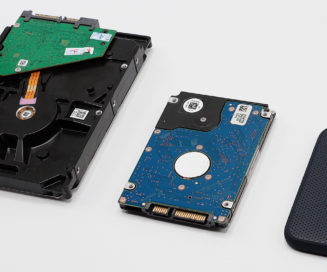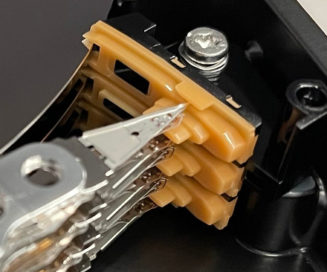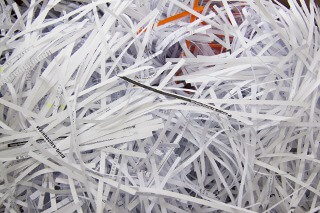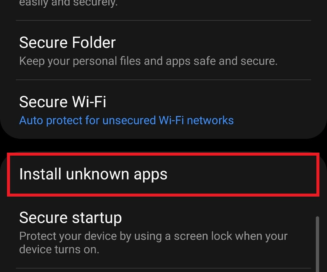Looking for something? Refine your search
- Categories
- Backup
- Cloud
- Computer Forensics
- Computing and CPU Power
- Cryptocurrency
- Damage
- Data Loss Prevention
- Data Recovery Knowledge
- Data Recovery News
- Data Recovery Service
- Data Types
- Database
- Digitization
- Encryption
- Flash Drive
- Hard Disk
- Investing and the Stock Market
- Mac/Apple
- Media
- Mobile Device
- NAS
- Network Security
- Office Documents
- Outreach
- Photos & Images
- RAID
- Ransomware Recovery
- Removable Media
- SAN
- Secure Deletion
- Server
- Services
- SSD
- Storage Industry
- Tape
- Uncategorized
- Video
- Tags
- actuator
- Apple
- backup
- bitcoin
- breach
- clean room
- clone
- computer forensics
- cryptocurrency
- cybercrime
- data recovery software
- data recovery tips
- decision tree
- EEPROM
- encryption
- ethereum
- exploit
- financial records
- fire damage
- flood
- guide
- hard drive data recovery
- hard drive failure
- hard drive manufacturers
- head ramps
- helium
- how to
- hurricane
- iOS
- landing zone
- leak
- Mac
- Mac OS
- machine learning
- macos
- Midwest
- migration
- music data recovery
- NAND
- NFT
- NVRAM
- operating system
- OS X
- parts
- password
- PCB
- Phoenix
- power surge
- RAID
- ransomware
- rebuilt
- SATA
- SaveMyFiles
- SSD
- statistics
- storms
- tornadoes
- TRIM
- video conversion
- virus
- water damage
- wildfires
- windows 10
- windows 10 guide
Data Recovery After Selecting Wrong Drive in Windows Media Creation Tool
The Windows Media Creation Tool is used to create backup installation media for Microsoft Windows systems. It’s intended for use with flash drives and DVDs with at least five gigabytes (5 GB) of available space. Occasionally, Windows users will accidentally...
December 7, 2023
Are Solid-State Drives Worse for the Environment Than Hard Drives?
Solid-state drives (SSDs) have a number of advantages over hard disk drives (HDDs): They’re faster, they consume less electricity, and they’re a more practical option in a wide range of operating conditions. Recently, Microsoft reportedly pressured manufacturers to avoid using...
August 11, 2022
Crypto Bridge Nomad Loses $200 Million in Alleged Hack
Nomad, a startup that allows users to trade cryptocurrency tokens between different blockchains, has acknowledged losses of nearly $200 million in crypto due to an apparent security vulnerability. Crypto hacks certainly aren’t new, and blockchain bridges are frequent targets. In...
August 4, 2022
A Brief History of Broadcast Video Formats
Today, the vast majority of broadcast footage is shot with digital equipment — but that’s a relatively recent development. For decades, analog formats like Betacam and U-Matic were standard, and even after the introduction of Digital Betacam (DigiBeta), many broadcasters...
August 1, 2022
Historic Rainfall Hits St. Louis: How to Protect Data from Flood Damage
St. Louis, Missouri experienced historic rainfall this morning, with some areas receiving more rain than on any other day in over a century. From July 25th to July 26th, some St. Louis suburbs were pelted with more than nine inches...
July 26, 2022
Do “File Shredder” Programs Really Work?
You’ve got sensitive data that you want to destroy, and you want to be extremely thorough. You want to make sure that no one — not even Datarecovery.com’s engineering team — can restore the target files. What do you do?...
July 19, 2022
How to Protect Your Phone from Ransomware
Most ransomware attacks target desktop computers, servers, and high-value storage networks — but in recent years, a growing number of attacks have targeted smartphones and other mobile devices. Below, we’ll look at a few examples of how mobile ransomware works....
April 8, 2022
The 2TB Flash Drive Scam: Why “High-Capacity” Flash Drives Are Fakes
You’re browsing Amazon or eBay, and you see a great deal: A 2-terabyte (TB) USB thumb drive for about $40. Is it a great bargain — or a dangerous scam? If you’ve read the headline of this article, you know...
March 29, 2022
Data Leak Response: 4 Tactics for Reducing Risks
According to the Identity Theft Resource Center, the number of data breaches jumped 68 percent in 2021 — setting a new record with a total of 1,862 events. To IT security experts, the numbers aren’t surprising. Bad actors use extremely...
March 21, 2022
How to Stop Locky Ransomware: Prevention, Decryption, and Recovery
Locky is the common name for a ransomware variant that first appeared in 2016. The first version of Locky was distributed by the Necurs botnet; subsequent versions have been introduced by Necurs and other distribution groups. Typically, the ransomware is...
March 9, 2022










